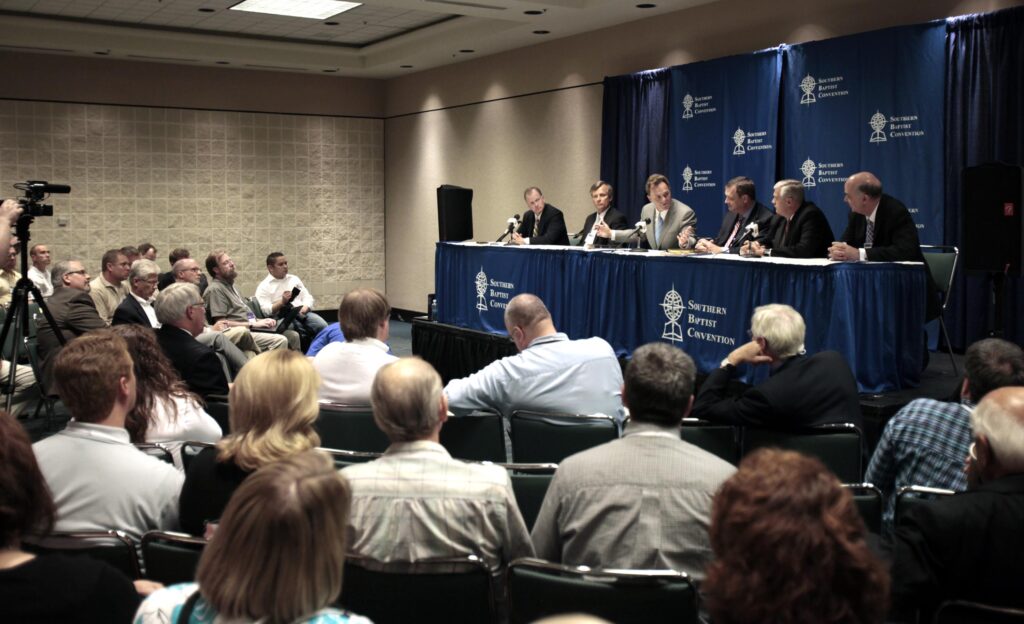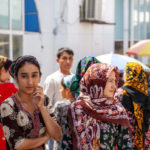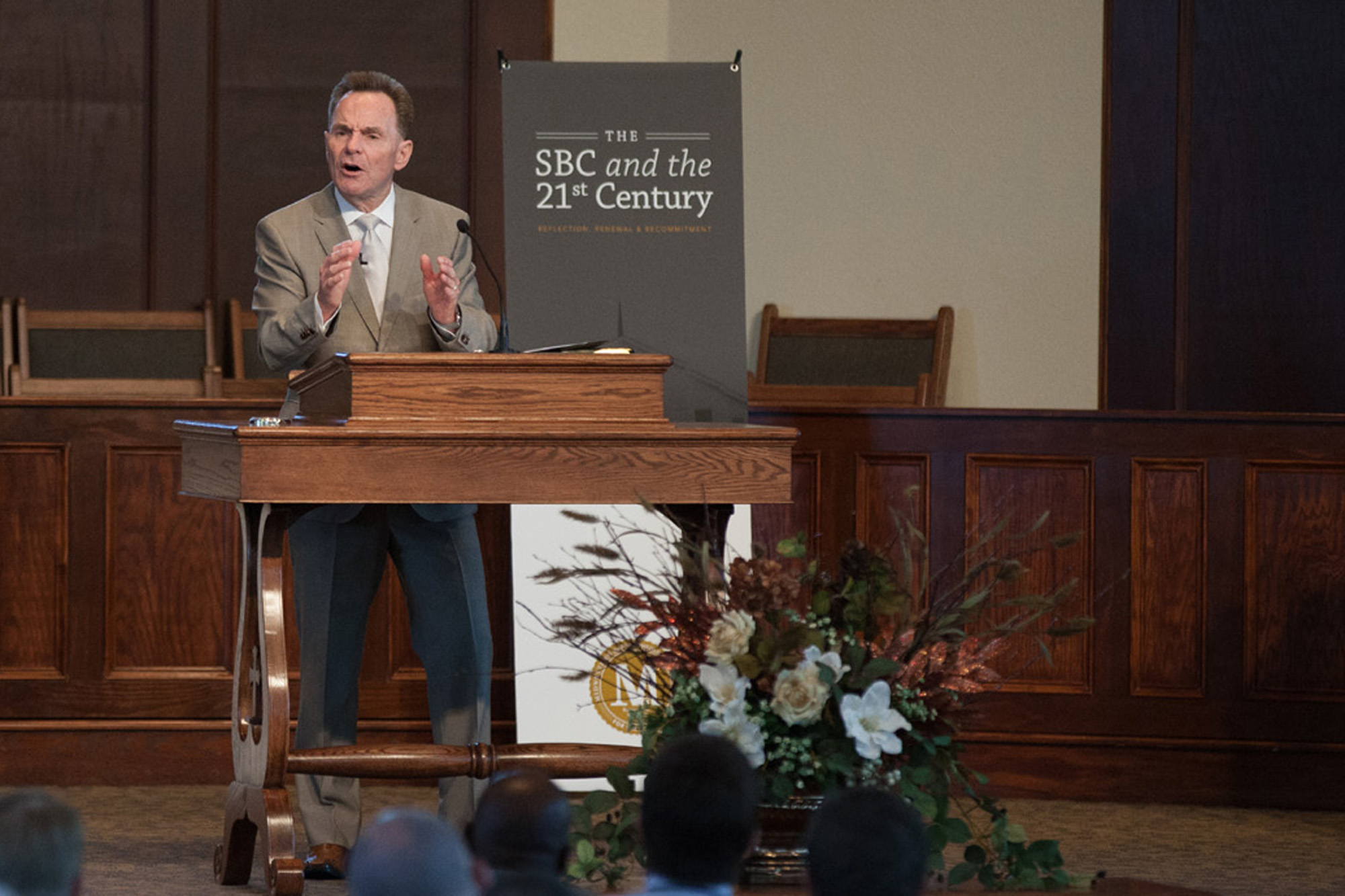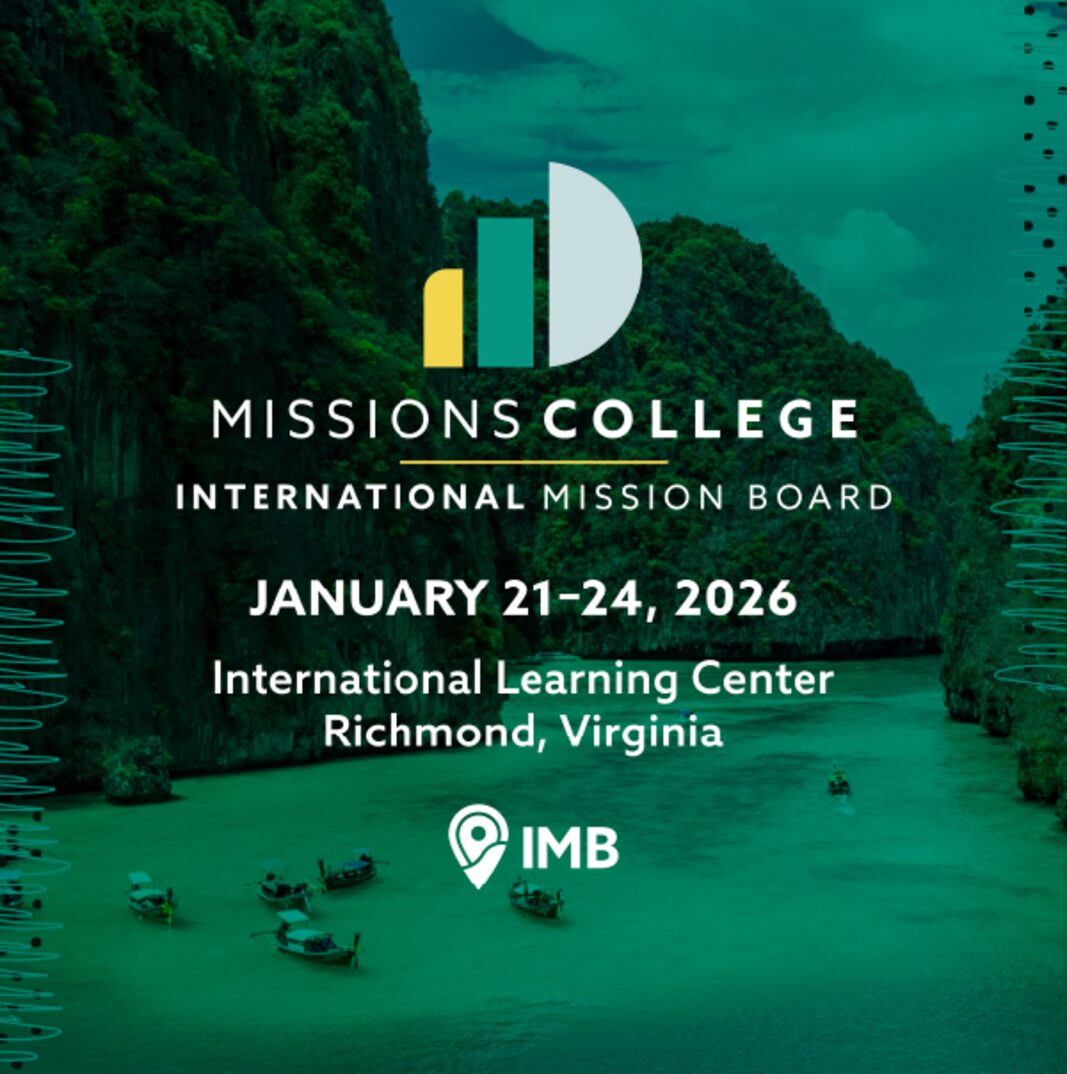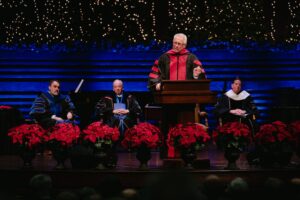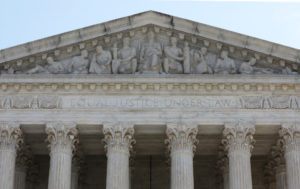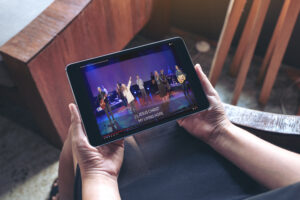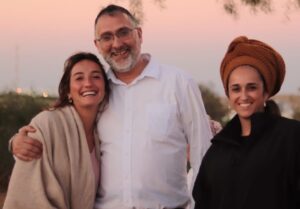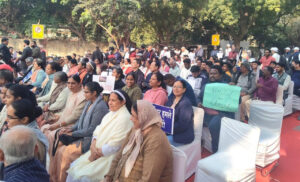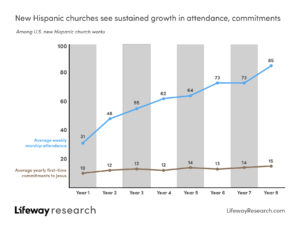
Editor’s note: Audio recordings of meetings held by the SBC’s Great Commission Resurgence Task Force in 2009 and 2010 were released earlier this year after being embargoed for 15 years. Baptist Press has spent the past few weeks listening to these recordings and talking with key task force members to get their thoughts on the task force’s effectiveness. This piece is the third in a four-part series. Read other installments here: Part 1, Part 2, Part 4.
NASHVILLE (BP) – After the first meeting of the Great Commission Resurgence Task Force (GCRTF), chairman Ronnie Floyd wondered how the group could unify to make recommendations. Opinionated leaders from a variety of Southern Baptist Convention tribes brought diverse viewpoints to the table.
Then Floyd received some advice: “The only thing I’ve ever seen bring Baptists together is the lostness of the world,” Floyd recalled to Baptist Press. So he invited then-International Mission Board President Jerry Rankin to the task force’s second meeting in August 2009 in Northwest Arkansas.
That was a game changer. Rankin delivered the “most stirring report,” Floyd said, and “changed the seriousness of the conversation.” The group focused on the lost world.
Taking the Gospel to the nations became one of the task force’s most effective rallying cries and one of its most enduring legacies. Of its seven recommendations adopted by the SBC in 2010, four referenced either the IMB or world missions generally. The GCRTF stoked support for the IMB’s emphasis on church planting, people groups and direct engagement of the lost by churches. Ironically, missionary numbers decreased notably in the decade following the task force’s work.
Renewed vision
By the year 2000, the IMB had begun to focus on unreached people groups with populations of 100,000 or more, Rankin told the task force. Between 2000 and 2009, the number of such people groups without a Gospel witness had reduced from approximately 650 to approximately 400.
The IMB contributed to that reduction by catalyzing church planting movements, Rankin said. In South Asia, for example, the board had planted 440 churches in a decade, a rapid acceleration from planting 21 the previous decade. Yet the SBC’s commitment to advance that vision through financial giving was lackluster, Rankin said.
“When I think about the Southern Baptist Convention, honestly, I’ve felt like there has just been a passionate commitment to mediocrity,” Rankin told the task force. Now, “I’ve moved beyond that … I’ve come to really believe there is a commitment to self-destruction. I just don’t see a lot of vision.”
Rankin’s report and subsequent GCRTF discussion yielded recommendations from the task force to increase IMB funding and, in turn, missionaries on the field. The SBC should reallocate more Cooperative Program dollars to the IMB, “consider the adoption” of a $200 million goal for the Lottie Moon Christmas Offering for International Missions by 2015 and adopt the term “Great Commission Giving” to celebrate giving to all SBC causes, not just the Cooperative Program, the task force’s report stated. SBC messengers adopted those recommendations in June 2010.
The question on the task force’s collective mind was whether those recommendations could solve the funding and vision problems Rankin identified. Time revealed that the answer was yes on some fronts and no on others.
Giving to the IMB did increase. The board received a combined $240 million from CP and Lottie Moon in 2008-09. That figure grew to more than $300 million in 2023-24. But the number of missionaries dropped. The IMB’s 5,441 missionaries in 2008-09 decreased to 3,566 in 2024 following a 2016 reduction of personnel to cope with financial trouble.
Unaware of the coming financial woes, in 2009 the GCRTF’s main concern was inspiring Southern Baptists to give more to international missions.
Southern Baptist Theological Seminary President Alber Mohler told the task force in 2009, “The problem is a hundred thousand times worse than it appears.” For every one dollar given by Southern Baptists in Alabama, South Carolina and Arkansas offering plates, an average of “1.26 cents actually gets to the International Mission Board.” A reallocation of CP funds, the task force reasoned, might inspire Southern Baptist giving by funneling more to the IMB.
“Every $2 million [to the IMB] is another 50 missionaries that we can find and we can mobilize,” Floyd told the task force at a San Antonio meeting in January 2010. Southeastern Baptist Theological Seminary President Danny Akin said at the same meeting, “If you say to folks, ‘We can send a hundred more [missionary] units with this Cooperative Program adjustment’ … that’s a good number to encourage.”
August Boto, then-vice president of the SBC Executive Committee, attended a portion of that meeting as a guest and told the task force reallocation of CP funds “is not the answer to our problem.” According to Boto’s calculations, 86 percent of funds collected at the national SBC level – including CP, Lottie Moon and other designated gifts – already went to missions. The way forward was inspiring more giving from churches, Boto said.
The GCRTF rejected Boto’s plea against CP reallocation. They recommended increasing the IMB’s allocation to 51 percent of national CP receipts, and messengers approved that recommendation. For the 2025-26 CP Allocation Budget, the figure stands at 50.41 percent to the IMB.
Yet the task force knew more than CP reallocation was needed to make a greater dent in global lostness.
The possibility of combining the IMB and the North American Mission Board into one global mission board was considered. “I think Southern Baptists are ready” for one mission board and one missions strategy, Mohler said. “Let’s just go do it.”
But the possibility ultimately was rejected. When Florida pastor Ted Traylor asked Rankin about forming a single mission board, Rankin replied, “There’s nothing in common between the two mission boards in terms of missionaries, support, strategy. The only thing in common is that we both have ‘mission’ and ‘board’ in our name.” Combining the mission boards would be “creating great bureaucracy that would dilute the effectiveness of what either of us are doing.”
Another possibility for spurring international missions giving was fostering direct giving to the IMB apart from CP. When Rankin preaches in a church, Florida pastor Ken Whitten said, he “knows all he has to say is the word, and they’re stroking checks before he walks out the door. He never does that. He gets shot and blamed for limping.”
Renewed momentum
IMB President Paul Chitwood told Baptist Press recently “conversations around GCR [the Great Commission Resurgence] did help” with raising awareness of the world’s unreached people groups. “It did help give energy to it.”
David Garrison, a retired IMB global strategist for evangelical advance, said the board shifted its focus to ethnolinguistic people groups beginning in the late 1980s. That emphasis led to shifting missionaries from Gospel-saturated nations to people groups without access to the message of Christ.
The people group emphasis was accompanied by a church planting emphasis, Garrison told BP. One church planting movement in East Asia saw 150,000 house churches planted in 10 years.
“The Great Commission Task Force helped align SBC aspirations with what God was doing around the world,” Garrison said. “And it made Southern Baptists more aware of unreached people groups in North America as well.”
Rankin underscored to the GCRTF the importance of taking the Gospel to all people groups. The Great Commission is not merely a call for “populating heaven with as many people as we can win to the Lord,” he said. If that were the goal, the IMB could double the number of baptisms it reports each year by redeploying all its missionaries to seven nations that are particularly receptive to the Gospel.
But that “would leave 10,000 people groups not even hearing the Gospel,” Rankin said. You “don’t do missions without evangelism, but just doing evangelism isn’t the Great Commission.”
The way forward
Despite increased awareness of people groups and increased IMB funding following the task force’s work, the mission board’s 2016 financial reset became necessary. Over a six-year period expenditures exceeded giving revenue by $210 million, and the missionary force was reduced by hundreds.
Southern Baptists possessed the “aspiration of sending more missionaries,” Chitwood said, but “in 2010 the IMB was not self-aware of how deep a hole it was in. It did not realize the financial decline it had been experiencing for decades. By 2016 … a reckoning came.”
That reckoning addressed the “symptom” of too much spending but not the “illness” of declining revenue, Chitwood said. The IMB began to address that revenue deficiency in 2020. Chitwood noted that inflation makes funding shortages even more severe than they appear. In addition to promoting CP, the IMB is promoting various channels of direct giving to causes, special projects and needs through Lottie Moon – as the GCRTF suggested.
Yet 15 years after the Great Commission Resurgence Task Force, another reinvigoration is needed, Chitwood said.
“We are doing everything we can to champion the Cooperative Program,” he said. “Regardless of Lottie being strong for us, if the CP continues to weaken, not only is the IMB weaker,” but “the entire ecosystem of Southern Baptist cooperative mission work that the IMB depends upon is also weakened.”
